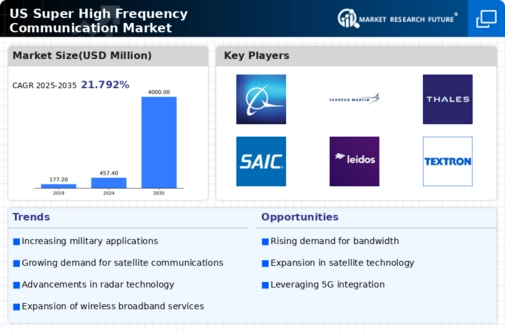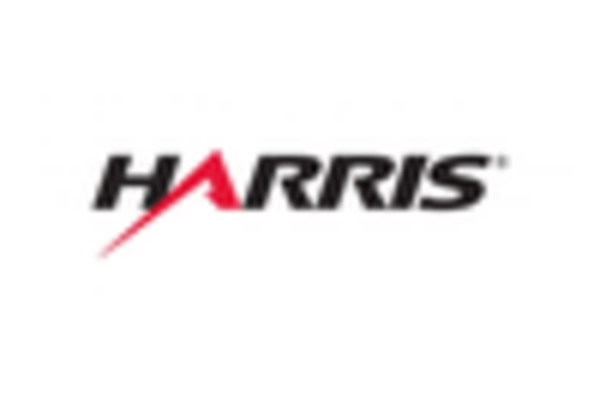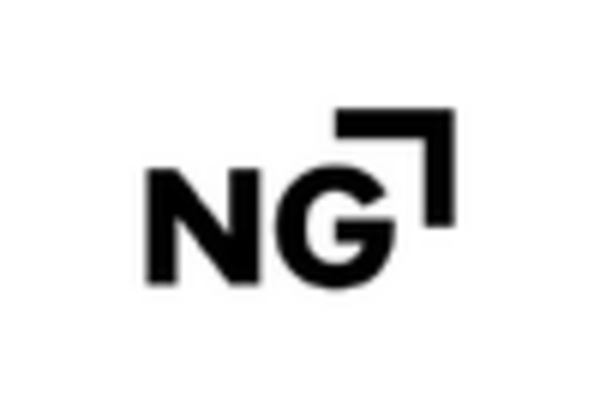Expansion of 5G Networks
The rollout of 5G networks across the United States is significantly influencing the super high-frequency-communication market. With the increasing adoption of 5G technology, there is a growing need for communication systems that can operate efficiently at higher frequencies. This transition is expected to enhance data transfer rates and reduce latency, which are critical for various applications, including IoT and smart city initiatives. As of November 2025, the 5G infrastructure is projected to contribute approximately 25% to the market growth, as telecommunications companies invest heavily in upgrading their networks. The integration of super high-frequency communication technologies into 5G systems may lead to innovative applications, further driving the market forward.
Growing Military Applications
The super high-frequency-communication market is experiencing a notable surge in demand due to its critical applications in military operations. The U.S. Department of Defense is increasingly adopting advanced communication systems that operate at super high frequencies to enhance tactical communication capabilities. This shift is driven by the need for secure, reliable, and high-speed data transmission in various military scenarios. As of 2025, the military sector accounts for approximately 30% of the overall market, reflecting a robust investment in communication technologies. The emphasis on real-time data sharing and situational awareness is likely to propel further growth in this segment, indicating a strong correlation between military advancements and the super high-frequency-communication market.
Increased Focus on Cybersecurity
The super high-frequency-communication market is also being shaped by the heightened focus on cybersecurity measures. As communication systems become more integral to business operations and national security, the need for secure communication channels is paramount. Organizations are investing in advanced encryption and security protocols to protect sensitive information transmitted over super high-frequency communication systems. This trend is expected to drive market growth, as companies prioritize secure communication solutions. By 2025, the cybersecurity segment within the market is projected to grow by 18%, reflecting the increasing awareness of potential threats. The super high-frequency-communication market is likely to evolve in response to these security challenges, leading to the development of more robust communication frameworks.
Rising Demand for High-Speed Internet
The super high-frequency-communication market is poised for growth due to the increasing demand for high-speed internet services across the United States. As consumers and businesses alike seek faster and more reliable internet connections, service providers are exploring advanced communication technologies that can deliver enhanced performance. The market for broadband services is expected to grow by 15% annually, with super high-frequency communication systems playing a pivotal role in meeting this demand. This trend is particularly evident in urban areas, where the need for robust communication infrastructure is paramount. The super high-frequency-communication market is likely to benefit from this shift, as it aligns with the broader push for improved connectivity.
Technological Innovations in Communication
Innovations in communication technology are driving the evolution of the super high-frequency-communication market. The development of advanced modulation techniques and signal processing algorithms is enhancing the efficiency and reliability of communication systems. These innovations are crucial for applications that require high data rates and low latency, such as video conferencing and real-time data analytics. As of November 2025, the market is witnessing a surge in research and development activities, with investments in new technologies expected to increase by 20% over the next five years. This focus on technological advancement is likely to create new opportunities within the super high-frequency-communication market, fostering a competitive landscape.

















Leave a Comment